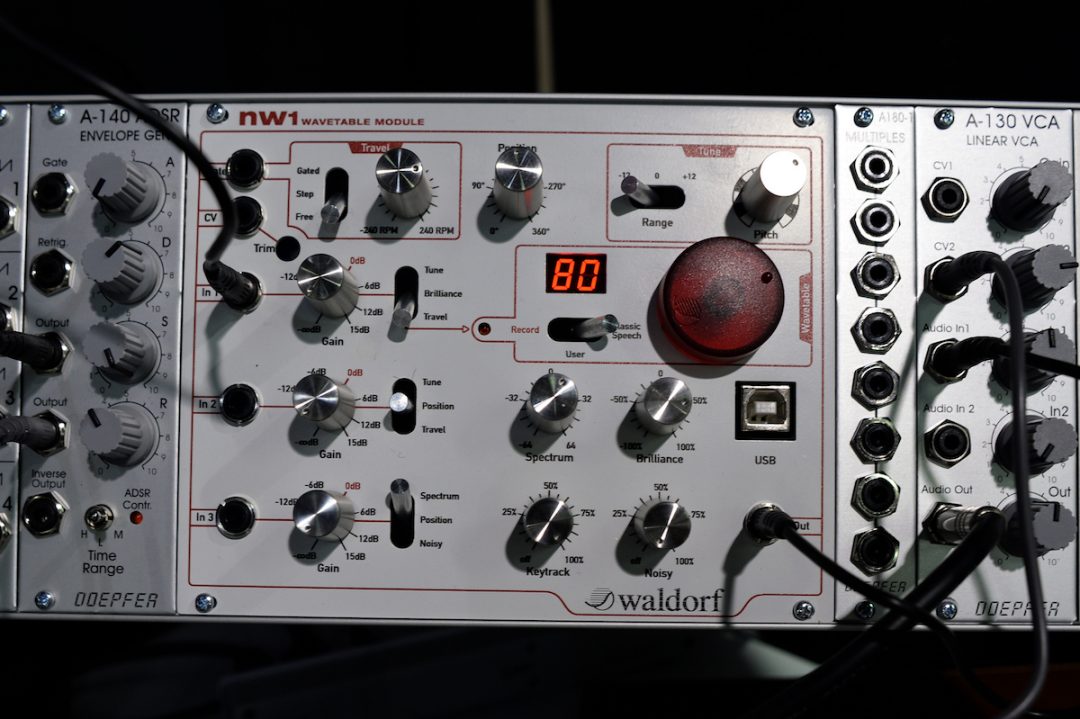Whether we’re aware of it, many of us are using sound synthesis technology everyday. As engineers and producers, we’re often relying on virtual instruments and plugins which use granular and wavetable synthesis to make sounds!
Granular synthesis is the technology behind pitch correction or speed manipulation software—Auto-Tune and Melodyne are both great examples of this, and ones many of use all the time. Wavetable synthesis is very common in synthesizer plugins, creating natural, note-like sounds.
Granular Sound Synthesis
Granular synthesis is based on the same principles as sampling, but instead of playing back samples regularly, it chops them up into what are referred to as “grains.” These grains, we mentioned, are anywhere between 1 and 50 ms in length, and can be manipulated by a number of parameters. For example, grains can be layered on top of one another, or played at different speeds, phases, frequencies, and levels.
When you alter the various parameters of grains, you can create a huge number of different sounds. Playback speed is also a crucial factor, with lower ones resulting in a kind of soundscape, and higher ones creating audible pitches with an unusual timbre.
Grains
A grain, as we’ve introduced, is a tiny chunk of sound, somewhere between 1 and 50 ms long, though other sources have described it as having a duration of 10-50 or 1-100 ms. Grains can be further broken down into its constituent parts; namely, the envelope and the “content.”
A grain’s envelope is manipulated to ensure there are no clicks, pops, crunches, distortion, or other unpleasant artifacts at the beginning and end of the sample.
A grain’s “content” can simply be described as audio, which is derived from any source, whether it be a sine wave, square wave, audio sample, or anything else.
Common DAW functions like Tempo Warping in Ableton, Elastic Audio in Pro Tools, and Flextime in Logic Pro X all use granular sound synthesis.
Wavetable Synthesis
Wavetable synthesis is a technique used in certain digital music synthesizers to produce natural, note-like sounds. An existing instrument’s note can be sampled and parsed into a sequence of wavetables.
Wavetable synthesizers differ from subtractive, additive, and FM/AM synths. In wavetable synthesis, waveforms live in an indexed table as single cycles that can be randomly accessed by the instrument.
Wavetable sythesizers can be used to create drones and pads that change in complex ways by sustaining the note. Alternately, you can create percussive sounds by using angular waveforms with a shorter envelope.
Popular Wavetable Synthesizer Plugins
Omnisphere by Spectrasonics
Omnisphere is another popular software synth available. Its massive library (14,806 sound) is enough to sift through for years, with sounds for any application imaginable.
Beyond that, a very unique feature setting it apart from other software synths is its hardware integration. Spectrasonics elaborates:
“Omnisphere is the only software synth in the world to offer a Hardware Synth Integration feature. This remarkable innovation transforms over 65 well-known hardware synthesizers into extensive hands-on controllers that unlock Omnisphere’s newly expanded synthesis capabilities.
“Simply put, this ground-breaking feature makes using Omnisphere feel just like using a hardware synth! By bridging the physical experience gap between software and hardware, users gain intuitive control of Omnisphere by using the familiar layout of their supported hardware synth. Virtual instrument users can now experience the joy of the hardware synth workflow and hardware synth users can fully expand their capabilities into the vast sonic world of Omnisphere!”
Codex by Waves
Plugin giants Waves also produce their own wavetable synthesizer called Codex. As is the case with most of the Waves library, it’s one of the most affordable software wavetable synthesizers available. Codex features custom-designed oscillators and a dynamic visual display of the waveforms in use to create complex sounds intuitively.
Serum by Xfer
Serum is one of the most popular wavetable synths on the market, used by countless producers and electronic artists. One of its key features is the ability to import your own audio to create custom wavetables and custom sounds. From Xfer:
“The dream synthesizer did not seem to exist: a wavetable synthesizer with a truly high-quality sound, visual and creative workflow-oriented interface to make creating and altering sounds fun instead of tedious, and the ability to ‘go deep’ when desired – to create/import/edit/morph wavetables, and manipulate these on playback in real-time.”
Serum also has some of the cleanest oscillators out of any wavetable synthesizer. The digital resampling occurring in wavetable synthesis means artifacts are created all the time. Serum has a built-in way of suppressing these artifacts for the some of the best-sounding wavetable synthesis out there.
Resources
A Granular Synthesis Resource Web Site
The Resynator is a monophonic pitch-tracking synthesizer with a pretty remarkable story. The instrument-controlled unit was invented by Don Tavel in the ’70s to track the pitch of any instrument plugged into it and produce synthesized sounds. As the world’s first synthesizer of its kind, the Resynator was way ahead of its time, but unfortunately never saw the proper production and distribution it deserved.
